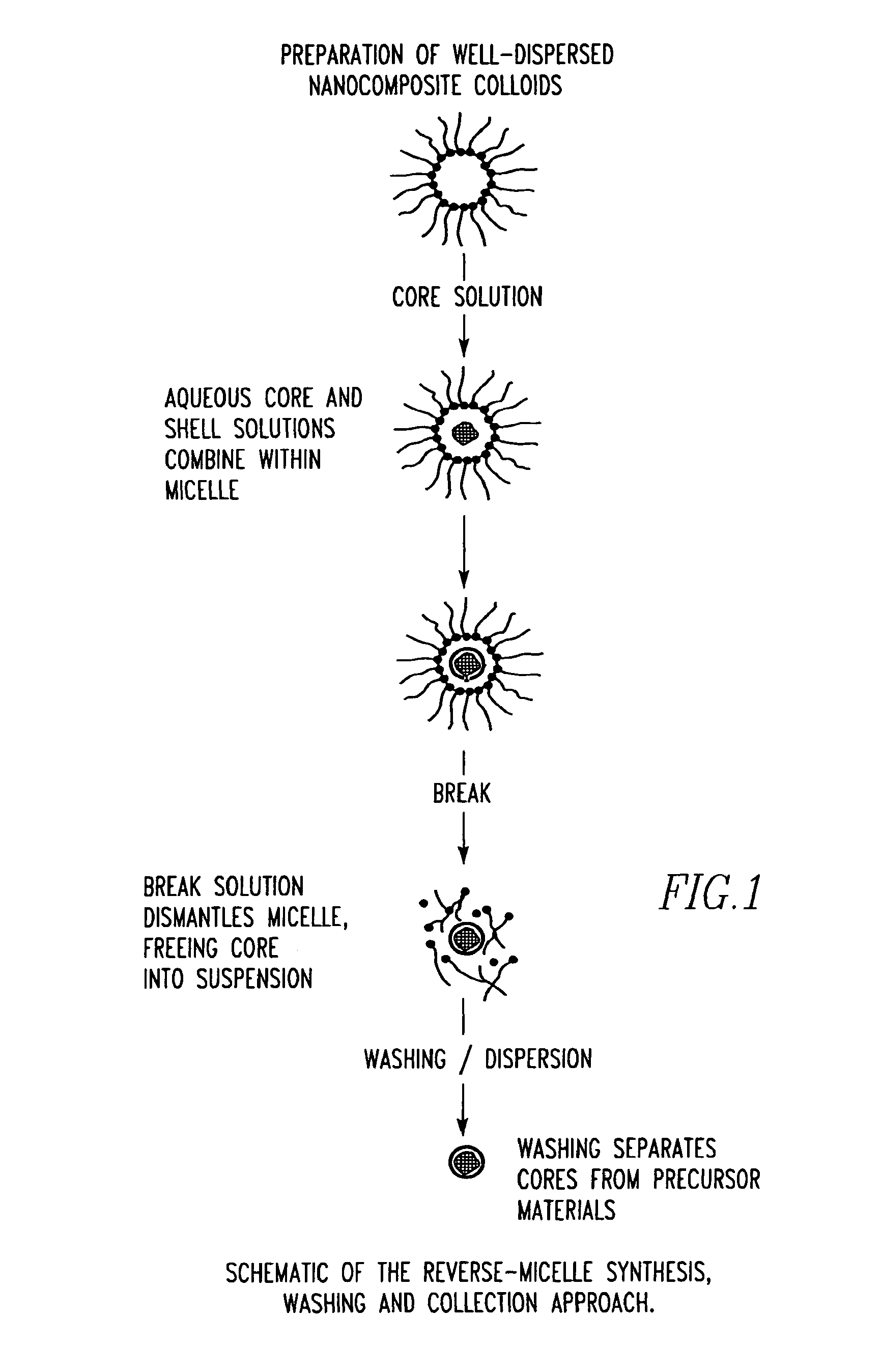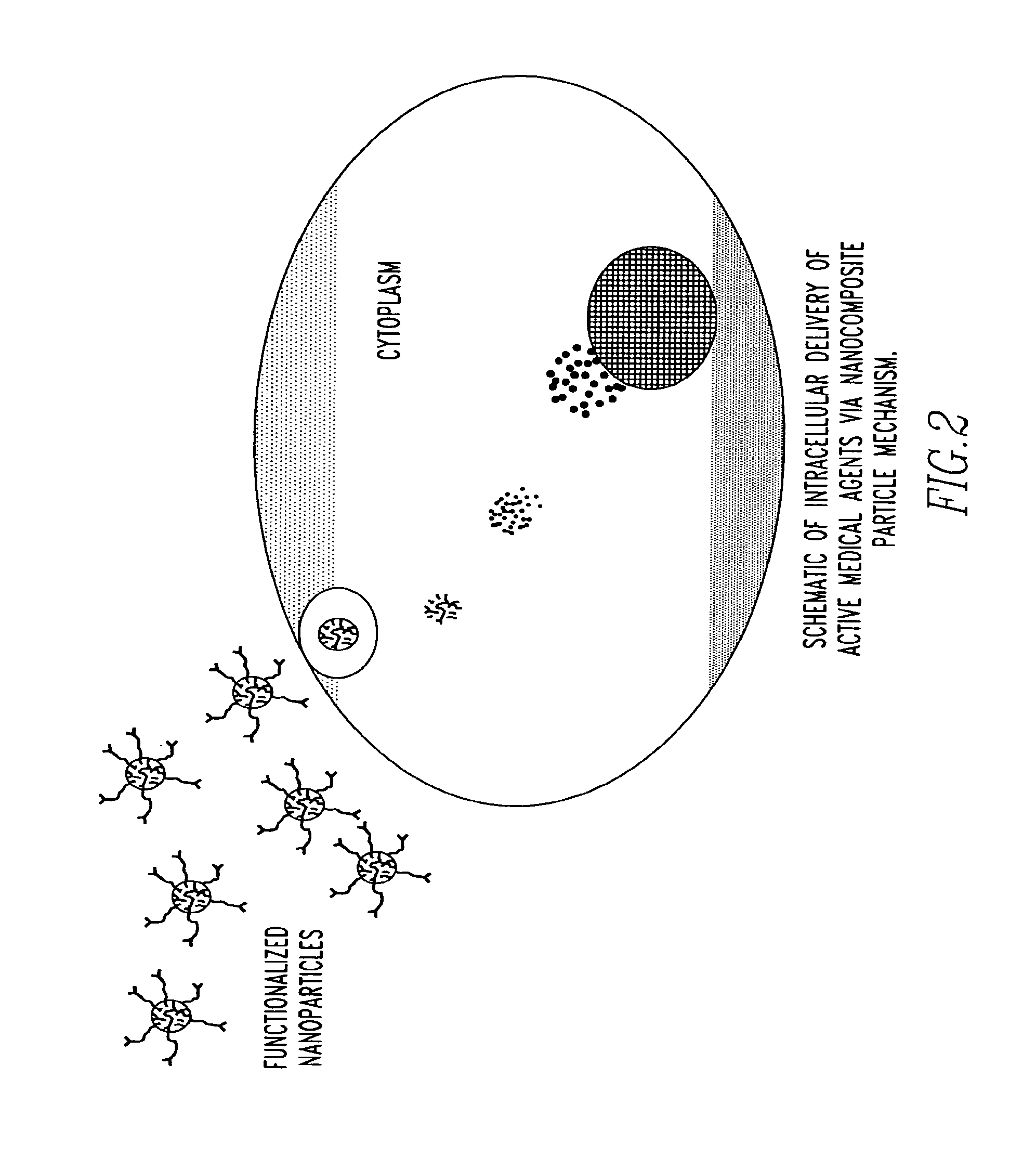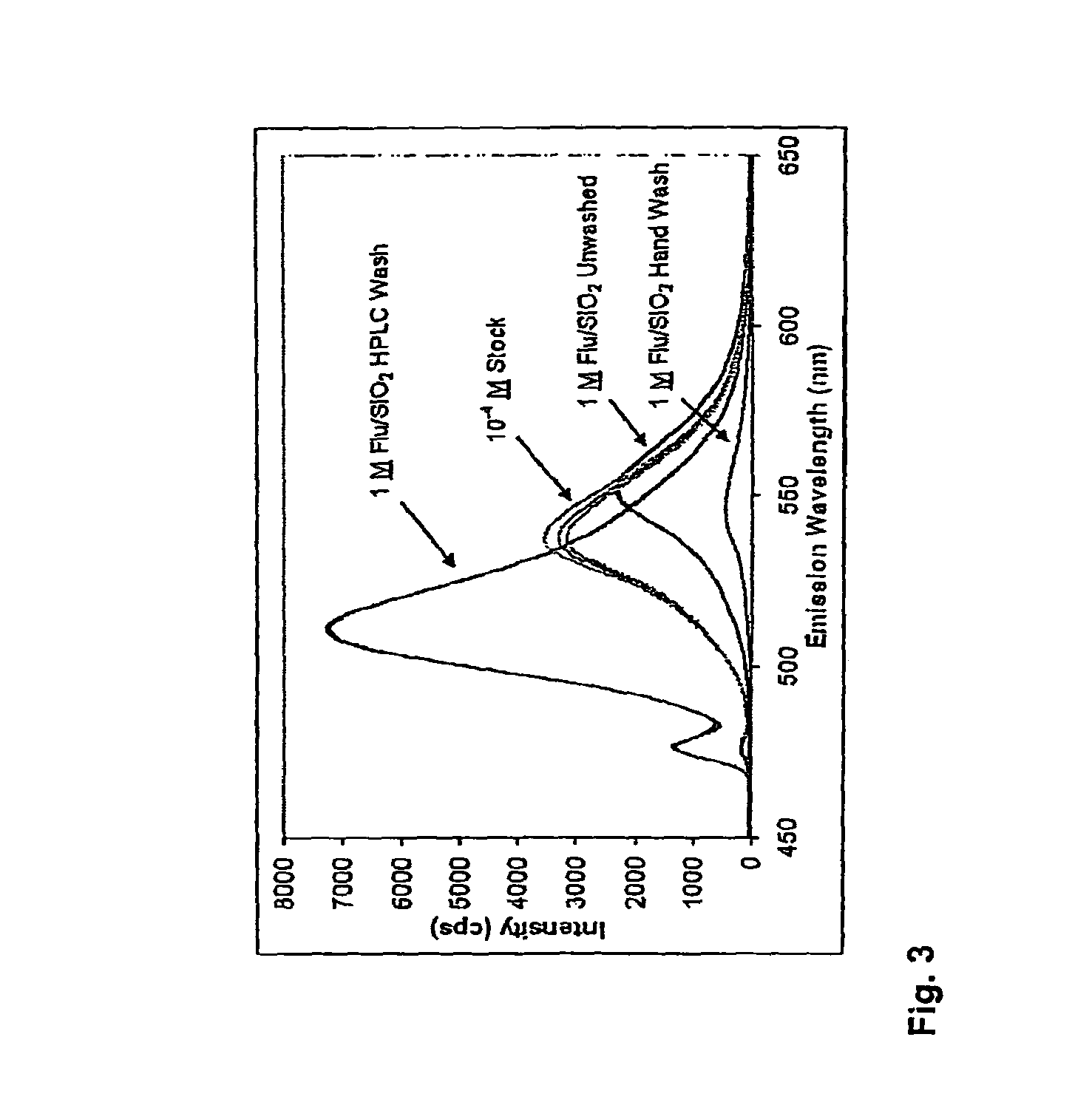Unagglomerated core/shell nanocomposite particles
a nano-composite particle and core technology, applied in the field of nano-composite particles, can solve the problems of poor crystallinity, limiting the effectiveness of the semiconductor nanocrystal as a bioimaging tool, and poor efficiency of the semiconductor nanocrystal, so as to improve the uptake of target cells, enhance the surface chemistry and dispersion of the nanoparticles, and contribute to the effectiveness of the nanocomposite particles
- Summary
- Abstract
- Description
- Claims
- Application Information
AI Technical Summary
Benefits of technology
Problems solved by technology
Method used
Image
Examples
example 1
Synthesis and Dispersion of Ag / SiO2 Nanocomposite Particles Using HPLC Compared to Four Conventional Techniques
1. Materials and Methods
Synthesis
[0092]The method used to synthesize the Ag / SiO2 nanocomposite particles has been described previously by Li, T. et al. (Langmuir, 15[13]:4328-4334, 1999). All chemicals involved were used as received. Nonionic surfactant poly (oxyethylene) nonylphenyl ether (Igepal CO-520), cyclohexane, silver nitrate, tetraethoxysilane (TEOS), silane coupling agent 3-aminopropyltriethoxysilane (APS), hydrazine and NH4OH (28˜30%), were all purchased from Aldrich Chemicals Co. (Milwaukee, Wisc.). Dehydrated ethanol (200 proof, Pharmca Products, Inc., Brookfield, Conn.) and glacial acetic acid (J. T. Baker Chemicals) were used without further purification. All aqueous stock solutions were prepared with deionized water (specific conductivity=0.4×10−7 S / m).
[0093]Briefly, the reverse micelle was formed by mixing 10 ml of cyclohexane and 4 ml of Igepal CO-520 foll...
example 2
Rhodamine B / SiO2 Nanocomposite Particle, AAN=1
[0115]To perform the nanocomposite particle syntheses using a water-in-oil synthesis method, polyoxyethylene(5)nonphenyl ether (Igepal® CO-520), cyclohexane, tetraethoxysilane (TEOS), 3-aminopropyltrimethoxysilane (APS), ammonium hydroxide, and acetic acid were purchased from Aldrich Chemical Co. (Milwaukee, Wisc.). Each of the chemicals utilized in the microemulsion synthesis process were used as received. The aqueous stock solutions used were prepared with deionized (DI) water (specific conductivity=0.4×10−7 S / m). A variety of organic fluorophore dyes can be encapsulated in the nanocomposite particles including the sodium salt of fluorescein, Rhodamine 123, Rhodamine B, Indocyanine Green, (Aldrich Chemical Co., Milwaukee, Wisc.), Rhodamine WT (Presto Dye Chem Co., Philadelphia, Pa.), cascade blue acetyl azide (Molecular Probes, Inc. Eugene, Oreg.), Cy 3 amidite, and Cy 5 amidite (Amersham Biosciences, Piscataway, N.J.).
[0116]To form a ...
example 3
Synthesis of Calcium Phosphate Nanocomposite Particles
[0118]The synthesis of calcium phosphate shell nanocomposite particles includes the preparation of two separate microemulsions. The nonionic surfactant, poly(oxyethylene) nonylphenyl ether (Igepal® CO-520, Aldrich Chemical Co.), cyclohexane (Aldrich Chemical Co.) and distilled water serve as the basis of the microemulsions. The surfactant was used without further purification. The size of the resulting nanoparticles was controlled by varying the ratio of water to surfactant (R=[water] / [surfactant]. Calcium chloride dehydrate (CaCl2, 99+%, Aldrich Chemical Co.) and sodium hydrogenphosphate (Na2HPO4, 99+%, Aldrich Chemical Co.) serve as the precursors for the calcium phosphate shell. Sodium metasilicate (SiO2, 44-47%), tetraethoxysilane (TEOS, 99%), and ammonium hydroxide (NH4OH) (29%) (all from Fisher Scientific) were used as received.
[0119]Two microemulsions each of 10 mL total volume, consisting of 2 mL Igepal, 5 mL cyclohexane ...
PUM
| Property | Measurement | Unit |
|---|---|---|
| diameter | aaaaa | aaaaa |
| flow rate | aaaaa | aaaaa |
| volume percent | aaaaa | aaaaa |
Abstract
Description
Claims
Application Information
 Login to View More
Login to View More - R&D
- Intellectual Property
- Life Sciences
- Materials
- Tech Scout
- Unparalleled Data Quality
- Higher Quality Content
- 60% Fewer Hallucinations
Browse by: Latest US Patents, China's latest patents, Technical Efficacy Thesaurus, Application Domain, Technology Topic, Popular Technical Reports.
© 2025 PatSnap. All rights reserved.Legal|Privacy policy|Modern Slavery Act Transparency Statement|Sitemap|About US| Contact US: help@patsnap.com



